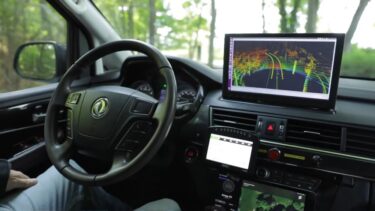How virtual reality improves the safety of self-driving cars

Researchers are developing a way to test the safety of autonomous driving by putting vehicles in a kind of virtual reality.
A team of researchers at Ohio State University has developed software to improve the safety of autonomous vehicles. Called Vehicle-in-Virtual-Environment (VVE), it allows driverless cars to be tested in a safe environment and creates a kind of virtual reality for robo-cars.
VR Headset for Self-Driving Cars
In autonomous driving, lidar, radar, or camera sensors capture the vehicle's surroundings and send the data to an AI system. The AI system, in turn, evaluates in real time how to handle the particular traffic situation detected by the sensors. In order to "learn" the right behavior and navigate safely through public road traffic, large data sets of real-world traffic situations and hours of training are required.
Ohio State University's VVE method minimizes the required training hours on public roads and replaces reality with a kind of virtual reality. The autonomous vehicle travels around a large, empty parking lot. Data normally collected by the vehicle's sensors is fed into the AI system by software.
For example, the vehicle "believes" it is at an intersection in the city center, even though it is only driving in the parking lot. The software then paints the car a picture of a highly realistic 3D environment of road conditions, other vehicles, pedestrians, objects, and dangerous situations.
A new standard for AI training for autonomous driving?
"With our software, we're able to make the vehicle think that it's driving on actual roads while actually operating on a large open, safe test area," explains Aksun-Guvenc of the Ohio State research team. This AI training would save time and money and eliminate the risk of fatal accidents caused by self-driving cars.
In a study, the researchers showed that this virtual reality for autonomous driving systems helps avoid potential collisions, increases pedestrian safety, and improves response to rare or extreme traffic situations.
The software makes it possible to simulate every conceivable scenario, from extreme traffic situations to everyday encounters with pedestrians at a crosswalk, said Levent Guvenc, co-author of the study. The developers have already filed a patent for the technology and hope it will become an industry standard in the next five to 10 years.
Note: Links to online stores in articles can be so-called affiliate links. If you buy through this link, MIXED receives a commission from the provider. For you the price does not change.